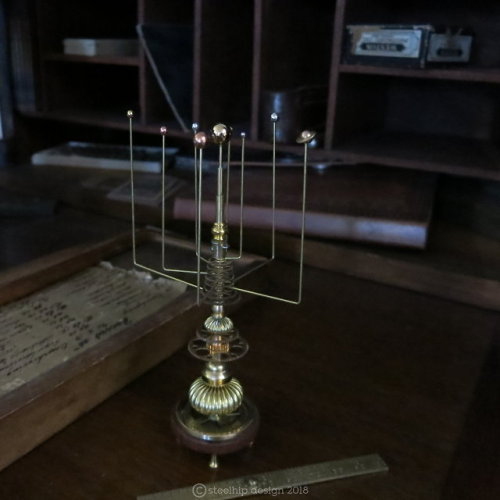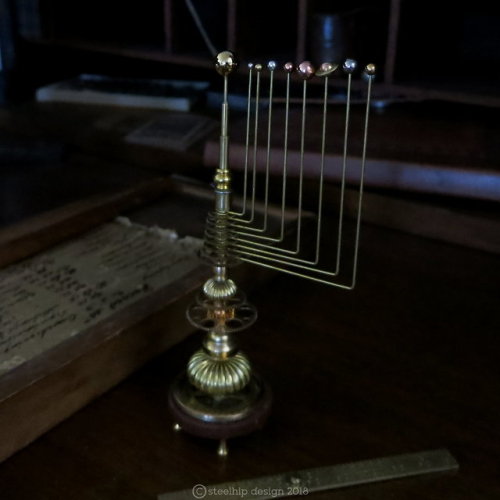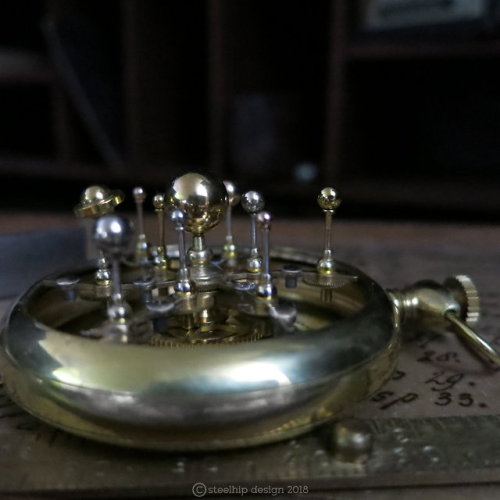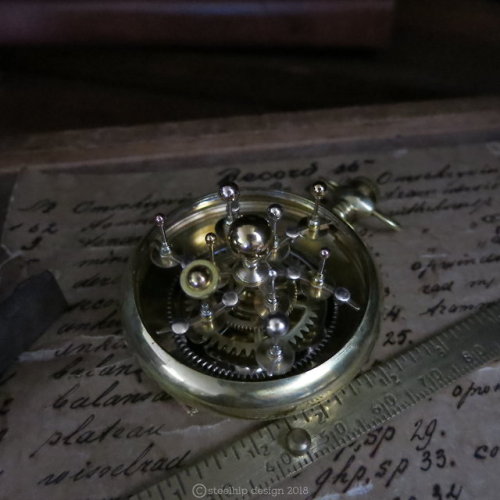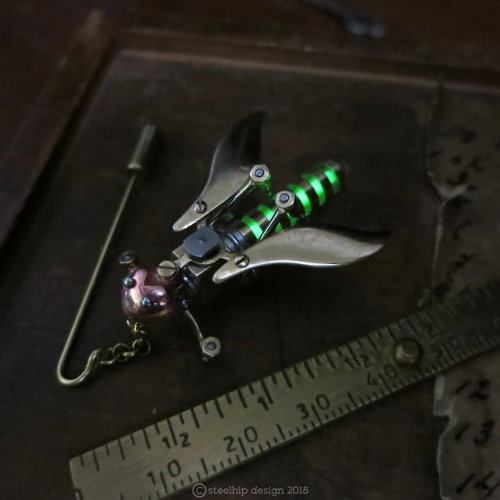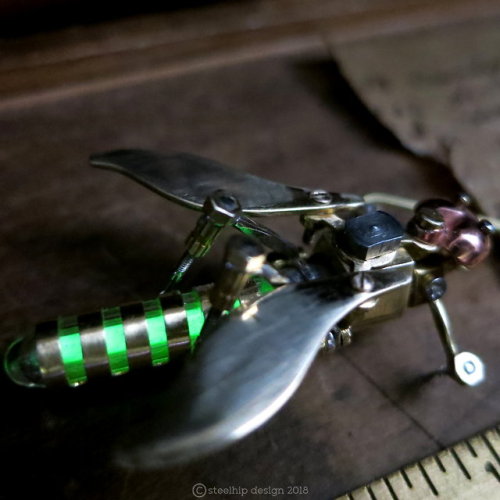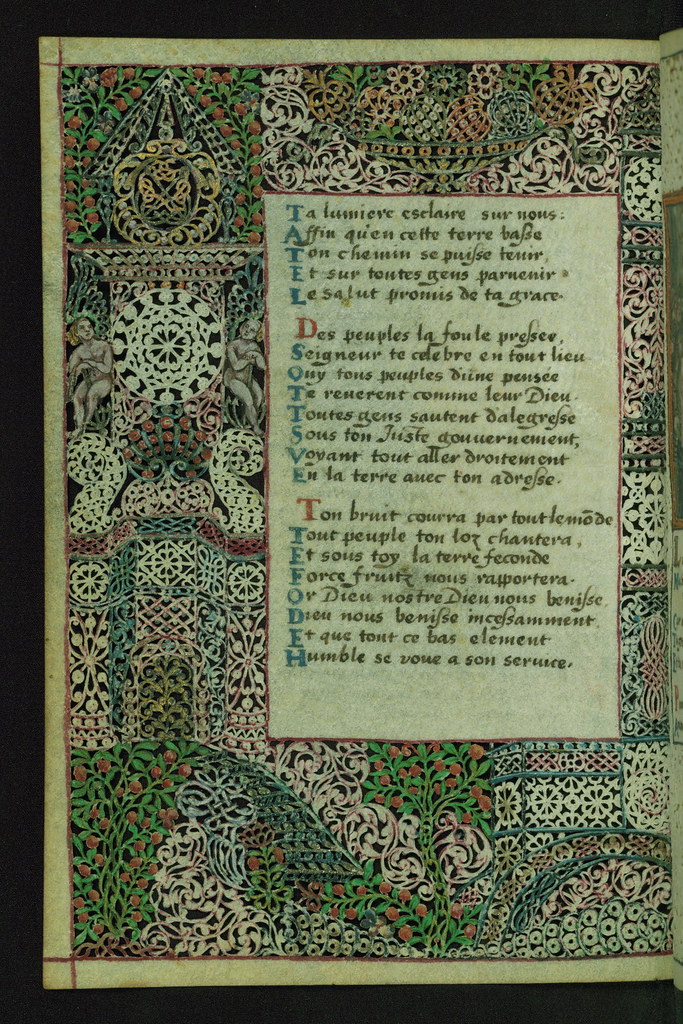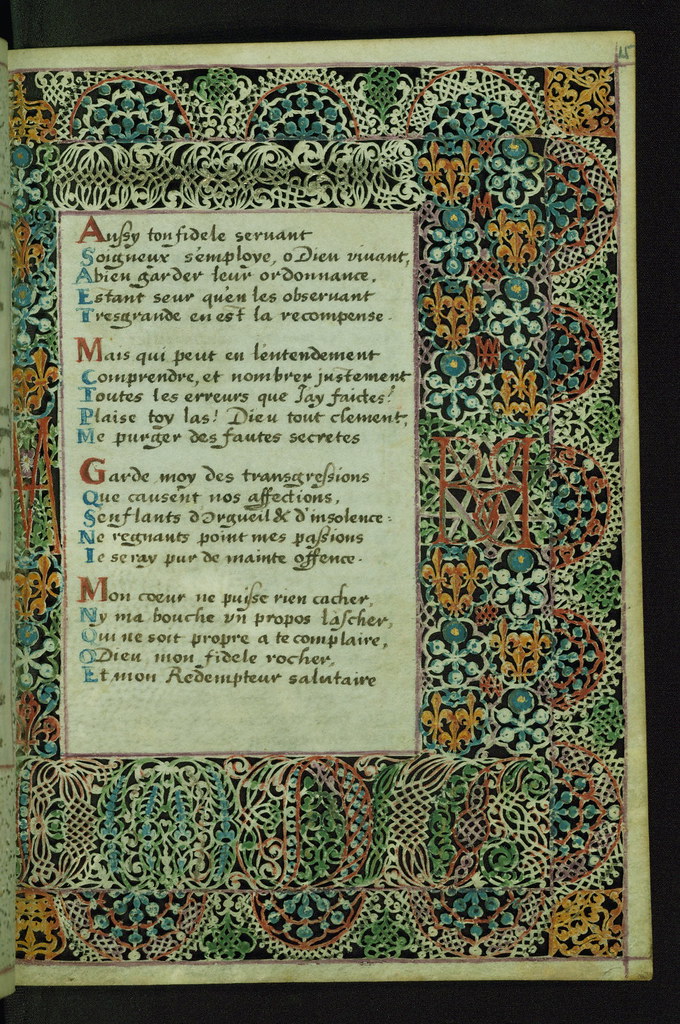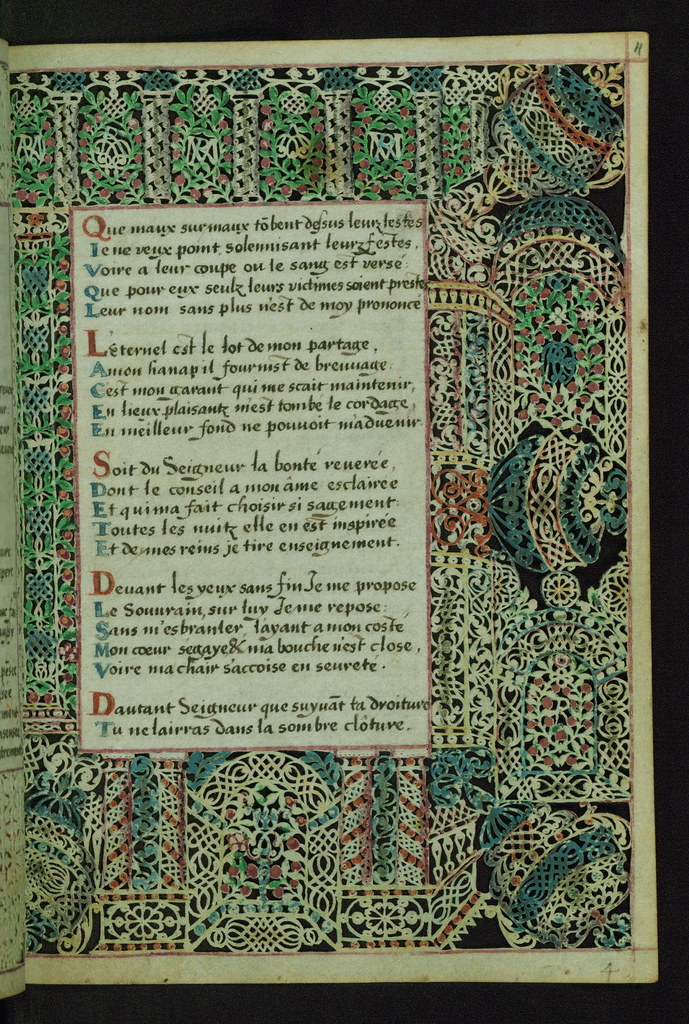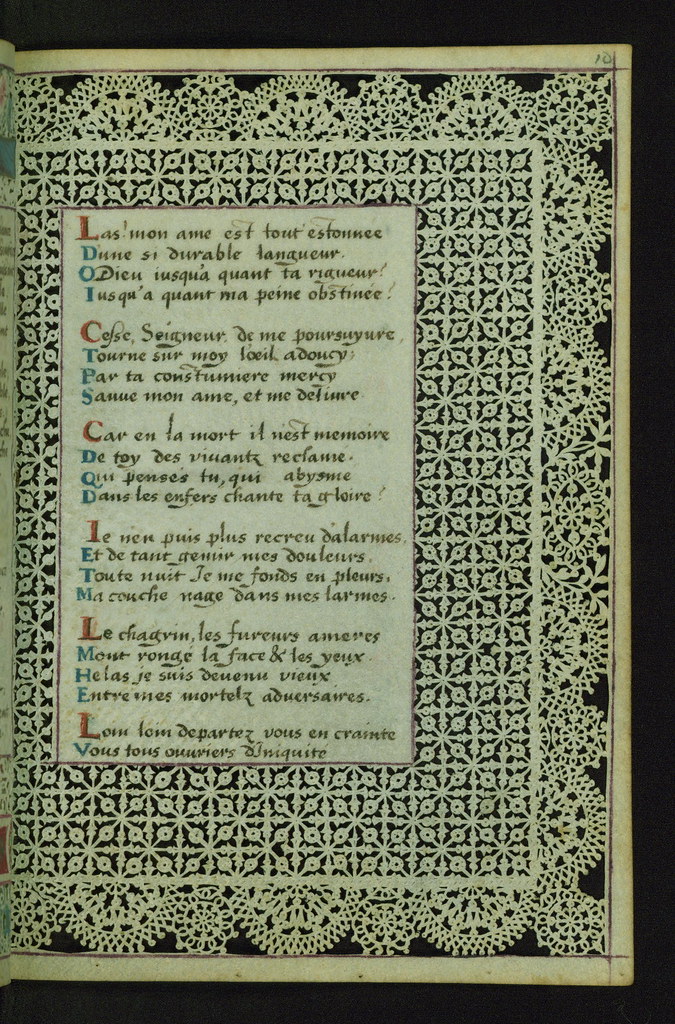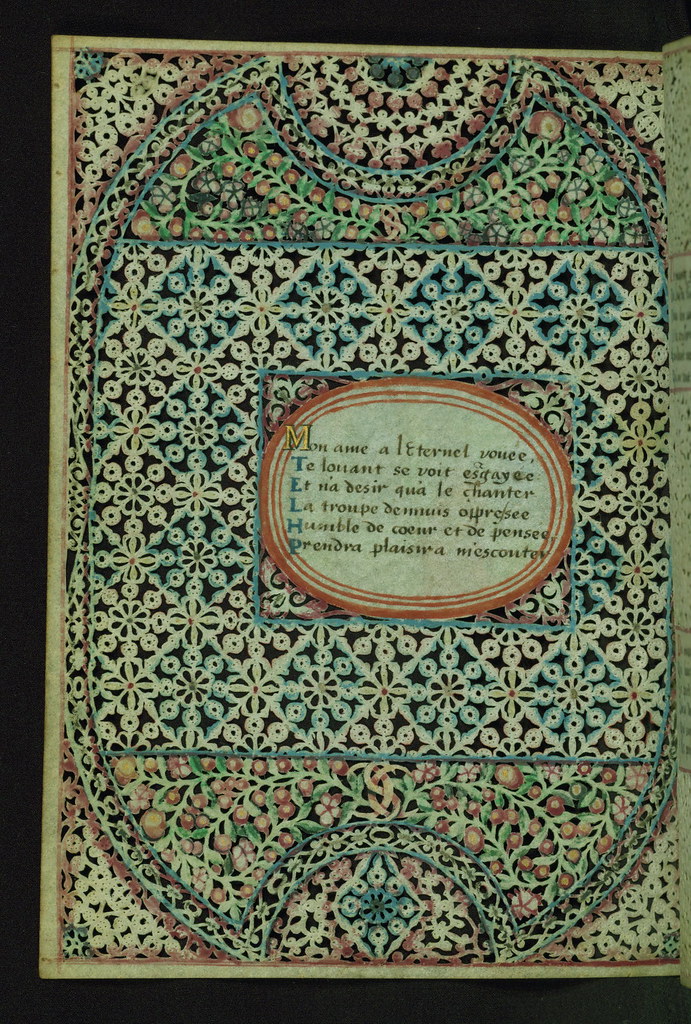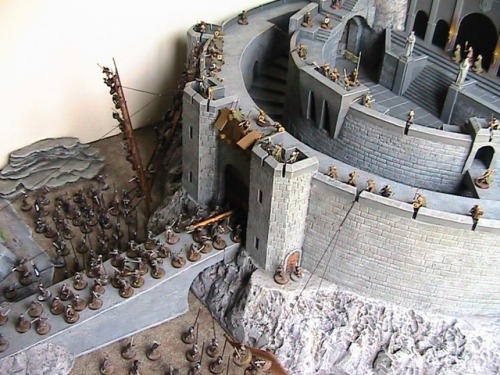#miniature
Like all my orrery sculptures - this is NOT mechanical - the planets do not move via clockwork mechanism. They can be turned gently by hand.
I’ve made a lot of orreries - I love making them. The gears are used to imply clockwork movement - so it’s a bit of a folley. This is the third orrery I’ve made using an “arm” for each planet. Please remember - this is not a toy. Moving the planets should only be done sparingly and carefully. To achieve the “look” of a real mechanical orrery I’ve used different sized pocket watch and regular watch gears, collected over many years, to correspond to each planet. All eight planets are represented - Saturn has her rings too.
It is on a stained wood base with four little brass legs and uses a number of different brass beads/components so it looks like a real antique scientific model but without the thousand dollar price tag. On the center stem I’ve used graduated brass tubing to “telescope” to the sun.
It is the perfect gift for a milestone celebration and an intriguing desk ornament for an executive or academic. To make it really personalised you can arrange the planets to the positions they were on a particular day - a wedding, a birthday, the birth of a child when it’s presented. I will send you a link to the free website that will calculate a celestial map for you.
It’s available in the Etsy shop.
Post link
This small orrery inspired piece is designed to be an ornament but could also be worn carefully as a pendant or as a fob. When I bought the case it didn’t have a crown or bow so I used other vintage parts in my collection. I think they suit the piece. The whole swedge with the planets can be gently rotated.
All the small planets, Mercury, Venus, Earth are on the inner ring followed by Mars, Jupiter and Saturn on the middle ring and finally, Uranus, Neptune and Pluto on the outer ring.
It’s available in my here in my Etsy shop
Post link
Tritium Powered Assassin Bug
No, not really “powered” by tritium but that would be fantastic. It’s just a fantasy mechanical winged insect with a tritium rod in the abdomen.It’s hanging from a stick pin so it can attached to clothing. The legs are vintage watch stems attached to brass rods. Nearly every connection is nuts and bolts - tiny nuts and bolts. The centre piece is brass with a square top screw securing the glass vial to the body and head.It’s estimated the green tritium will glow continuously for 10 to 12 years. It doesn’t need “charging” from a light source like regular glow in the dark.
It’s 1 ½ inches long, just over 1 inch wide and stands ½ an inch high. It’s US$185 shipping included. If you are interested in buying it - drop me a line with your paypal email address and I’ll invoice you.
Post link
Lace Book of Marie de’ Medici, Lace margins, Walters Manuscript W.494, Folio 17v by Walters Art Museum
Via Flickr:
This Prayerbook was made for Marie de’ Medici in the second quarter of the seventeenth century. Beyond its provenance as a personal book owned by the famous queen, it is exceptional for its intricately cut borders, which transform the parchment margins into lace. This effect was created using a technique known as “canivet,” in which a small knife was used to cut ornate patterns into paper or parchment. An art form that flourished originally among nuns in France, Germany, and the Netherlands beginning in the sixteenth century, it was employed to exceptional effect in several manuscripts connected with Marie de’ Medici. The Walters manuscript, made for her while she was regent of France, and wife of King Henry IV, contains twenty-eight miniatures, including original religious imagery as well as several later additions: a gouache portrait of the elderly queen, and nine small miniatures produced in Bruges ca. 1450 by an artist influenced by the Eyckian and Gold Scrolls styles prevalent at the time; the coat-of-arms of Marie de Medici, as well as her monogram. The Walters manuscript retains its original binding composed of mosaic inlays in green and black leather, as well as fine gilt pointillé foliate tooling, and a replica of the binding was created by Léon Gruel for Henry Walters on one of his seventeenth-century printed books (92.467) that also connects to Marie de’ Medici. All manuscript images and descriptions were created and are provided through Preservation and Access grants awarded to the Walters Art Museum by the National Endowment for the Humanities, 2008-2014. Access a complete set of high-resolution archival images of this manuscript for free on the Digital Walters at www.thedigitalwalters.org/Data/WaltersManuscripts/html/W494/
Lace Book of Marie de’ Medici, Lace margins, Walters Manuscript W.494, Folio 15r by Walters Art Museum
Via Flickr:
This Prayerbook was made for Marie de’ Medici in the second quarter of the seventeenth century. Beyond its provenance as a personal book owned by the famous queen, it is exceptional for its intricately cut borders, which transform the parchment margins into lace. This effect was created using a technique known as “canivet,” in which a small knife was used to cut ornate patterns into paper or parchment. An art form that flourished originally among nuns in France, Germany, and the Netherlands beginning in the sixteenth century, it was employed to exceptional effect in several manuscripts connected with Marie de’ Medici. The Walters manuscript, made for her while she was regent of France, and wife of King Henry IV, contains twenty-eight miniatures, including original religious imagery as well as several later additions: a gouache portrait of the elderly queen, and nine small miniatures produced in Bruges ca. 1450 by an artist influenced by the Eyckian and Gold Scrolls styles prevalent at the time; the coat-of-arms of Marie de Medici, as well as her monogram. The Walters manuscript retains its original binding composed of mosaic inlays in green and black leather, as well as fine gilt pointillé foliate tooling, and a replica of the binding was created by Léon Gruel for Henry Walters on one of his seventeenth-century printed books (92.467) that also connects to Marie de’ Medici. All manuscript images and descriptions were created and are provided through Preservation and Access grants awarded to the Walters Art Museum by the National Endowment for the Humanities, 2008-2014. Access a complete set of high-resolution archival images of this manuscript for free on the Digital Walters at www.thedigitalwalters.org/Data/WaltersManuscripts/html/W494/
Lace Book of Marie de’ Medici, Transfiguration, Walters Manuscript W.494, fol. 13r by Walters Art Museum
Via Flickr:
This Prayerbook was made for Marie de’ Medici in the second quarter of the seventeenth century. Beyond its provenance as a personal book owned by the famous queen, it is exceptional for its intricately cut borders, which transform the parchment margins into lace. This effect was created using a technique known as “canivet,” in which a small knife was used to cut ornate patterns into paper or parchment. An art form that flourished originally among nuns in France, Germany, and the Netherlands beginning in the sixteenth century, it was employed to exceptional effect in several manuscripts connected with Marie de’ Medici. The Walters manuscript, made for her while she was regent of France, and wife of King Henry IV, contains twenty-eight miniatures, including original religious imagery as well as several later additions: a gouache portrait of the elderly queen, and nine small miniatures produced in Bruges ca. 1450 by an artist influenced by the Eyckian and Gold Scrolls styles prevalent at the time; the coat-of-arms of Marie de Medici, as well as her monogram. The Walters manuscript retains its original binding composed of mosaic inlays in green and black leather, as well as fine gilt pointillé foliate tooling, and a replica of the binding was created by Léon Gruel for Henry Walters on one of his seventeenth-century printed books (92.467) that also connects to Marie de’ Medici. All manuscript images and descriptions were created and are provided through Preservation and Access grants awarded to the Walters Art Museum by the National Endowment for the Humanities, 2008-2014. Access a complete set of high-resolution archival images of this manuscript for free on the Digital Walters at www.thedigitalwalters.org/Data/WaltersManuscripts/html/W494/
Lace Book of Marie de’ Medici, Lace margins, Walters Manuscript W.494, Folio 11r by Walters Art Museum
Via Flickr:
This Prayerbook was made for Marie de’ Medici in the second quarter of the seventeenth century. Beyond its provenance as a personal book owned by the famous queen, it is exceptional for its intricately cut borders, which transform the parchment margins into lace. This effect was created using a technique known as “canivet,” in which a small knife was used to cut ornate patterns into paper or parchment. An art form that flourished originally among nuns in France, Germany, and the Netherlands beginning in the sixteenth century, it was employed to exceptional effect in several manuscripts connected with Marie de’ Medici. The Walters manuscript, made for her while she was regent of France, and wife of King Henry IV, contains twenty-eight miniatures, including original religious imagery as well as several later additions: a gouache portrait of the elderly queen, and nine small miniatures produced in Bruges ca. 1450 by an artist influenced by the Eyckian and Gold Scrolls styles prevalent at the time; the coat-of-arms of Marie de Medici, as well as her monogram. The Walters manuscript retains its original binding composed of mosaic inlays in green and black leather, as well as fine gilt pointillé foliate tooling, and a replica of the binding was created by Léon Gruel for Henry Walters on one of his seventeenth-century printed books (92.467) that also connects to Marie de’ Medici. All manuscript images and descriptions were created and are provided through Preservation and Access grants awarded to the Walters Art Museum by the National Endowment for the Humanities, 2008-2014. Access a complete set of high-resolution archival images of this manuscript for free on the Digital Walters at www.thedigitalwalters.org/Data/WaltersManuscripts/html/W494/
Lace Book of Marie de’ Medici, Lace margins, Walters Manuscript W.494, Folio 10r by Walters Art Museum
Via Flickr:
This Prayerbook was made for Marie de’ Medici in the second quarter of the seventeenth century. Beyond its provenance as a personal book owned by the famous queen, it is exceptional for its intricately cut borders, which transform the parchment margins into lace. This effect was created using a technique known as “canivet,” in which a small knife was used to cut ornate patterns into paper or parchment. An art form that flourished originally among nuns in France, Germany, and the Netherlands beginning in the sixteenth century, it was employed to exceptional effect in several manuscripts connected with Marie de’ Medici. The Walters manuscript, made for her while she was regent of France, and wife of King Henry IV, contains twenty-eight miniatures, including original religious imagery as well as several later additions: a gouache portrait of the elderly queen, and nine small miniatures produced in Bruges ca. 1450 by an artist influenced by the Eyckian and Gold Scrolls styles prevalent at the time; the coat-of-arms of Marie de Medici, as well as her monogram. The Walters manuscript retains its original binding composed of mosaic inlays in green and black leather, as well as fine gilt pointillé foliate tooling, and a replica of the binding was created by Léon Gruel for Henry Walters on one of his seventeenth-century printed books (92.467) that also connects to Marie de’ Medici. All manuscript images and descriptions were created and are provided through Preservation and Access grants awarded to the Walters Art Museum by the National Endowment for the Humanities, 2008-2014. Access a complete set of high-resolution archival images of this manuscript for free on the Digital Walters at www.thedigitalwalters.org/Data/WaltersManuscripts/html/W494/
Lace Book of Marie de’ Medici, John the Baptist baptizing Christ, Walters Manuscript W.494, fol. 8r by Walters Art Museum
Via Flickr:
This Prayerbook was made for Marie de’ Medici in the second quarter of the seventeenth century. Beyond its provenance as a personal book owned by the famous queen, it is exceptional for its intricately cut borders, which transform the parchment margins into lace. This effect was created using a technique known as “canivet,” in which a small knife was used to cut ornate patterns into paper or parchment. An art form that flourished originally among nuns in France, Germany, and the Netherlands beginning in the sixteenth century, it was employed to exceptional effect in several manuscripts connected with Marie de’ Medici. The Walters manuscript, made for her while she was regent of France, and wife of King Henry IV, contains twenty-eight miniatures, including original religious imagery as well as several later additions: a gouache portrait of the elderly queen, and nine small miniatures produced in Bruges ca. 1450 by an artist influenced by the Eyckian and Gold Scrolls styles prevalent at the time; the coat-of-arms of Marie de Medici, as well as her monogram. The Walters manuscript retains its original binding composed of mosaic inlays in green and black leather, as well as fine gilt pointillé foliate tooling, and a replica of the binding was created by Léon Gruel for Henry Walters on one of his seventeenth-century printed books (92.467) that also connects to Marie de’ Medici. All manuscript images and descriptions were created and are provided through Preservation and Access grants awarded to the Walters Art Museum by the National Endowment for the Humanities, 2008-2014. Access a complete set of high-resolution archival images of this manuscript for free on the Digital Walters at www.thedigitalwalters.org/Data/WaltersManuscripts/html/W494/
Lace Book of Marie de’ Medici, Lace margins, Walters Manuscript W.494, Folio 6v by Walters Art Museum
Via Flickr:
This Prayerbook was made for Marie de’ Medici in the second quarter of the seventeenth century. Beyond its provenance as a personal book owned by the famous queen, it is exceptional for its intricately cut borders, which transform the parchment margins into lace. This effect was created using a technique known as “canivet,” in which a small knife was used to cut ornate patterns into paper or parchment. An art form that flourished originally among nuns in France, Germany, and the Netherlands beginning in the sixteenth century, it was employed to exceptional effect in several manuscripts connected with Marie de’ Medici. The Walters manuscript, made for her while she was regent of France, and wife of King Henry IV, contains twenty-eight miniatures, including original religious imagery as well as several later additions: a gouache portrait of the elderly queen, and nine small miniatures produced in Bruges ca. 1450 by an artist influenced by the Eyckian and Gold Scrolls styles prevalent at the time; the coat-of-arms of Marie de Medici, as well as her monogram. The Walters manuscript retains its original binding composed of mosaic inlays in green and black leather, as well as fine gilt pointillé foliate tooling, and a replica of the binding was created by Léon Gruel for Henry Walters on one of his seventeenth-century printed books (92.467) that also connects to Marie de’ Medici. All manuscript images and descriptions were created and are provided through Preservation and Access grants awarded to the Walters Art Museum by the National Endowment for the Humanities, 2008-2014. Access a complete set of high-resolution archival images of this manuscript for free on the Digital Walters at www.thedigitalwalters.org/Data/WaltersManuscripts/html/W494/
Lace Book of Marie de’ Medici, Flight into Egypt, Walters Manuscript W.494, fol. 6r by Walters Art Museum
Via Flickr:
This Prayerbook was made for Marie de’ Medici in the second quarter of the seventeenth century. Beyond its provenance as a personal book owned by the famous queen, it is exceptional for its intricately cut borders, which transform the parchment margins into lace. This effect was created using a technique known as “canivet,” in which a small knife was used to cut ornate patterns into paper or parchment. An art form that flourished originally among nuns in France, Germany, and the Netherlands beginning in the sixteenth century, it was employed to exceptional effect in several manuscripts connected with Marie de’ Medici. The Walters manuscript, made for her while she was regent of France, and wife of King Henry IV, contains twenty-eight miniatures, including original religious imagery as well as several later additions: a gouache portrait of the elderly queen, and nine small miniatures produced in Bruges ca. 1450 by an artist influenced by the Eyckian and Gold Scrolls styles prevalent at the time; the coat-of-arms of Marie de Medici, as well as her monogram. The Walters manuscript retains its original binding composed of mosaic inlays in green and black leather, as well as fine gilt pointillé foliate tooling, and a replica of the binding was created by Léon Gruel for Henry Walters on one of his seventeenth-century printed books (92.467) that also connects to Marie de’ Medici. All manuscript images and descriptions were created and are provided through Preservation and Access grants awarded to the Walters Art Museum by the National Endowment for the Humanities, 2008-2014. Access a complete set of high-resolution archival images of this manuscript for free on the Digital Walters at www.thedigitalwalters.org/Data/WaltersManuscripts/html/W494/
Today in Middle-earth history: The battle of Helm’s Deep. In honor of this, the second most epic battle in Lord of the Rings, take a look at this amazing miniature by Maciej Wytrychowski: http://ow.ly/TJVo30imipE
Post link


片手に収まる感じがとても良いです。ハピネス


2月5日は双子の日と聞いて
Time for more nurgle robot !!
Commission painting


Let’s take a step away from the Nurgle side of the army and look at pure evil and class!

Death guard terminator!
Commission work

I’m more of a cold weather person. And you? What’s your favorite weather?

